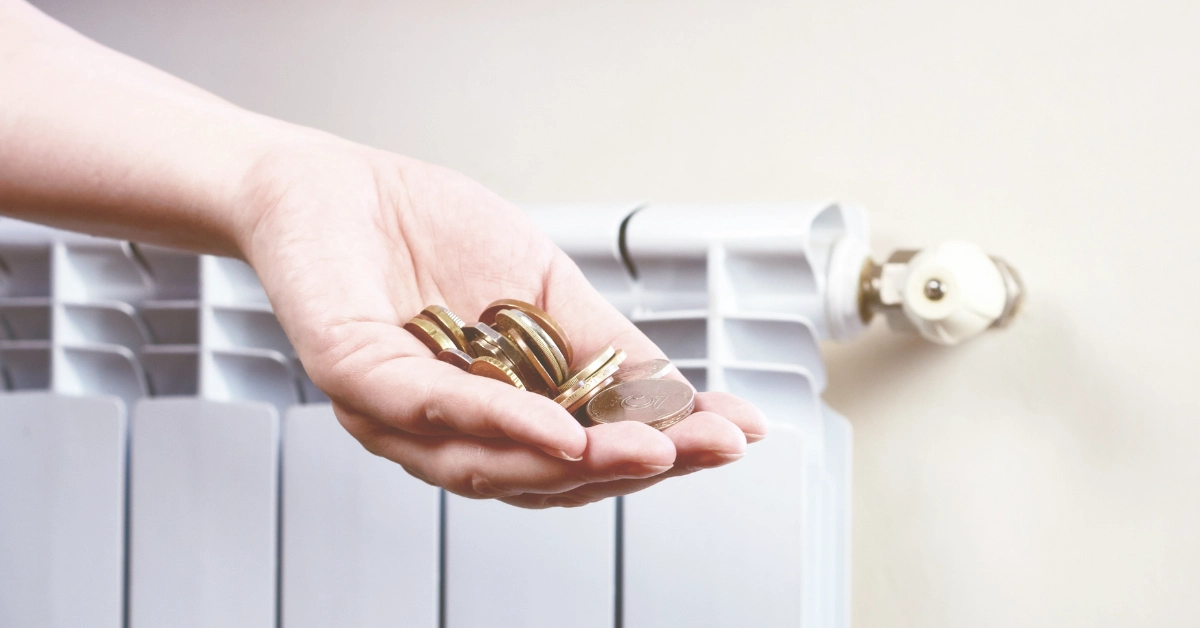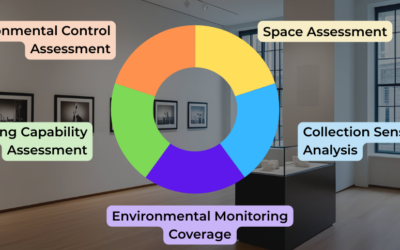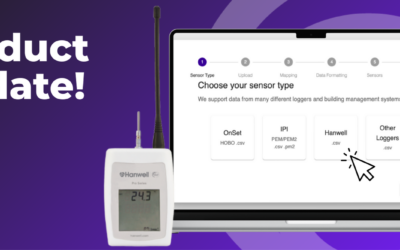The Internet of Things (IoT) is a network of connected devices that can collect and exchange data over the internet. IoT has many applications in various sectors, including museums. So how can IoT museum devices leverage this modern technology to enhance visitor experience, improve security, preserve artifacts, and optimize operations? In this article, we will explore how museums can reduce their energy consumption by harnessing IoT data loggers for sustainability.
What are IoT data loggers and how do they work?
IoT data loggers are devices that can measure and record environmental parameters, such as temperature, humidity, light, motion, vibration, sound, and air quality. They can be attached to museum objects, display cases, walls, ceilings, floors, or any other location where data is needed. IoT data loggers will then communicate wirelessly with a central server or cloud platform, where the data can be stored, analyzed, and visualized.
IoT data loggers can help museums monitor and control the ambient conditions of their exhibits and storage areas. This is crucial for preserving the integrity and quality of museum objects, which can be sensitive to changes in temperature, humidity, light, and other factors. By using IoT data loggers, museums can adjust the heating, ventilation, and air conditioning (HVAC) systems accordingly, avoiding overcooling or overheating the spaces. This can save energy and reduce greenhouse gas emissions, not to mention significantly lower the energy bills of the institution.
How can museums use IoT data loggers for sustainability?
Specifically, IoT museum devices can leverage wireless data loggers to achieve sustainability goals by providing insights into their energy consumption patterns and identifying opportunities for improvement. For example, museums can use IoT data loggers to:
- Track the energy consumption of different exhibits, rooms, or zones within the museum by monitoring the environmental conditions as set by mechanical systems.
- Compare the effect of the outside weather on storage spaces during different seasons, days of the week, or hours of the day, thus leading to better decision making for environmental control. This comparison will allow you to implement strategies such as seasonal setpoints, system setbacks and even system shutdowns.
- Detect anomalies or inefficiencies in the HVAC system of the museum.
- Optimize the lighting levels and schedules of the exhibits based on visitor traffic, natural light, and exposure.
- Implement smart power management strategies, such as turning off or dimming devices when they are not in use or during off-peak hours.
- Evaluate the impact of energy-saving measures on the condition of collections and lead to publishable research results for the benefit of other collections care professionals.
By using IoT data loggers for sustainability, museums can not only directly reduce their operational costs and environmental impact but also enhance their reputation and social responsibility. Museums can showcase their sustainability efforts to their visitors and stakeholders, demonstrating their commitment to conservation and education.
Trends and opportunities for IoT museum devices
Good quality and timely information are essential for decision-making. Thanks to the continued development of the Internet of Things as well as the newer applications allowed by Artificial Intelligence, there are several benefits IoT museum devices can reap for an energy and resource-efficient care of collections:
- Smart lighting and climate control: Without having to wait for an unknown distant future, IoT data loggers today can enable museums to implement smart lighting and climate control systems that can automatically adjust the intensity, color, and duration of the light, and the temperature and humidity levels, according to the specific needs of each artifact or space. This can help museums to reduce their energy consumption and carbon footprint, while enhancing the aesthetic and educational value of their exhibits. Smart lighting and climate control systems can also be integrated with other IoT devices, such as cameras or motion detectors, to create interactive and immersive experiences for the visitors. If you are interested in this type of system, learn more in this blog post on different types of motion detectors for lighting control.
- Remote monitoring and alerting: This feature is also already common in many wireless data logger offers. Collections care professionals may monitor and access the environmental data of their collections from anywhere and at any time, using web or mobile applications. This can help heritage staff to improve their efficiency and productivity, as well as their collaboration and communication with other stakeholders, such as conservators, curators, researchers, or even loan officers and insurance agents. IoT data loggers could provide real-time alerts to museum staff or even authorities in case of any abnormal or critical situations, such as fire, flood, theft, or vandalism, allowing them to take immediate actions to protect their collections.
- Predictive analytics: Predictive analytics still need a bit more work, but IoT data logger software will be able to leverage advanced algorithms and machine learning to analyze the historical and current data on the environmental conditions of their collections, and to predict the future trends and risks. Standard pattern recognition by existing machine learning models can be used to help museum staff recognize anomalous events in the data as well as potential risks and optimize their preventive conservation strategies, such as adjusting the temperature, humidity, light, and UV levels, or relocating the artifacts to more suitable locations. Predictive analytics can also help museums to identify the causes and sources of environmental fluctuations, such as leaks, cracks, or faulty HVAC systems, and to take corrective actions before they cause irreversible damage.
- Insect recognition for Integrated Pest Management: Now this is still just an idea but harnessing the potential if IoT sensors with cameras and a good database of museum pests such as the one in MuseumPests.net could help you well on your way to identifying the pests in your traps even if you’re not an IPM expert. Again, good old pattern recognition matched with AI-aided internet queries could go a long way – as it already does with existing available mobile apps aimed at plant care and identification or bird song recognition. Being able to track and recognise your insects with the aid of your data loggers will give you the time you require to take action before any issues become so significant that a heavier investment in treatment (and, by extension, money and carbon footprint) becomes necessary.
Conclusions
IoT data loggers are powerful tools that can help museums reduce their energy consumption by harnessing IoT for sustainability. They can provide valuable data on the environmental conditions and energy usage of museum spaces, enabling museums to optimize their operations and conserve their resources. By using IoT data loggers with sustainability in mind, museums can not only reduce operational costs and protect the environment but also enhance visitor experience and social impact. If you are interested in trying out IoT data loggers for the care of your collections, feel free to test out Conserv Cloud for free first by uploading your own .csv files. If you decide you like it, please come talk to us about our sensors which will then unlock many of the cool IoT capabilities such as real-time alerts and live remote monitoring.
If you have any questions about environmental monitoring, integrated pest management, or just want to talk about preventative conservation, please reach out to us! Don’t forget to check out our blog or join our community of collections care professionals where you can discuss hot topics, connect with your peers or even take a course to get familiar with the Conserv platform.




